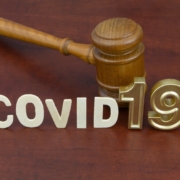WHO CLAIMS THE KIDS? YOU OR YOUR EX-SPOUSE?
Article Highlights:
- Custodial Parent
- Dependency (Exemption) Release
- Joint Custody
- Tiebreaker Rules
- Child’s Exemption
- Head of Household Filing Status
- Tuition Credit
- Child Care Credit
- Child Tax Credit
- Affordable Care Act
- Earned Income Tax Credit
If you are a divorced or separated parent with children, a commonly encountered but often-misunderstood issue is who claims the child or children for tax purposes. This is sometimes a hotly disputed issue between parents; however, tax law includes some very specific but complicated rules about who profits from the child-related tax benefits. At issue are a number of benefits, including the children’s dependency tax exemption, child tax credit, child care credit, higher-education tuition credit, earned income tax credit, and in some cases even filing status.
This is actually one of the most complicated areas of tax law, and serious mistakes can be made by taxpayers preparing their own returns or inexperienced tax preparers, especially if the parents are not communicating well. Where parents will cooperate with each other, they often can work out the best tax result overall, even though it may not be the best for them individually, and compensate for it in other ways.
Where a family court awards physical custody of a child to one of the parents, tax law is very specific in awarding that child’s dependency to the parent with physical custody, regardless of the amount of child support provided by the other parent. However, the custodial parent may release the dependency (exemption) to the non-custodial parent by completing the appropriate IRS form.
CAUTION – The decision to relinquish the dependency should not be taken lightly, as it impacts a number of tax benefits.
On the other hand, if the family court awards joint physical custody, only one of the parents may claim the child as a dependent for tax purposes. If the parents cannot agree between themselves as to who will claim the child and the child is actually claimed by both, the IRS tiebreaker rules will apply. Per the tiebreaker rules, the child is treated as a dependent of the parent with whom the child resided for the greater number of nights during the tax year, or if the child resides with both parents for the same amount of time during the tax year, the parent with the higher adjusted gross income claims the child as a dependent.
Child’s Exemption – The parent who claims the child as a dependent is entitled to the child’s tax exemption – which is actually a deduction from income of $4,050 in 2016. However, the exemption begins to phase out for higher-income taxpayers with an AGI of $259,400 for single taxpayers, $285,350 for those qualifying for head of household filing status and $311,300 for married taxpayers filing jointly.
Head of Household Filing Status – An unmarried parent can claim the more favorable head of household, rather than single, filing status if the parent is the custodial parent and pays more than one-half of the cost of maintaining as his or her home a household which is the principal place of abode for more than one-half the year for that child. This is true even when the child’s dependency (and therefore the $4,050 exemption deduction) is released to the non-custodial parent.
Tuition Credit – If the child qualifies for either the American Opportunity or the Lifetime Learning higher-education tax credit, the credit goes to whoever claims the child’s exemption. Credits are significant tax benefits because they reduce the amount of tax dollar-for-dollar, while deductions reduce income to arrive at taxable income that is then taxed according to the individual’s tax bracket. For instance, the American Opportunity Tax Credit (AOTC) provides a tax credit of up to $2,500, 40% of which is refundable. However, both education credits phase out for higher-income taxpayers. For instance, the AOTC phases out between $65,000 and $80,000 for unmarried taxpayers and $130,000 and $160,000 for married taxpayers.
Child Care Credit – A nonrefundable tax credit is available to the custodial parent for the care of the child while the parent is gainfully employed or seeking employment. To qualify for this credit, the child must be under the age of 13 and be a dependent of the parent. However, a special rule for divorced or separated parents provides that where the custodial parent releases the child’s exemption to the non-custodial parent, the custodial parent would still qualify to claim the childcare credit, and it cannot be claimed by the noncustodial parent.
Child Tax Credit – A credit of $1,000 is allowed for a child under the age of 17. That credit goes to the parent claiming the child as a dependent. However, this credit phases out for higher-income parents, beginning at $75,000 for unmarried parents and $110,000 for married parents filing jointly.
Affordable Care Act – Parents must keep in mind that where the child does not have medical insurance during periods of the year, the parent claiming the child as a dependent (claims the $4,050 exemption) is the one responsible for any applicable penalties when the child does not have health insurance coverage.
Earned Income Tax Credit (EITC) – Lower-income parents with earned income (wages or self-employment income) may qualify for the EITC. This credit is based on the number of children (under age 19 or a full-time student under age 24) the custodial parent has, up to a maximum of three children. Releasing the dependency exemption to the noncustodial parent will not disqualify the custodial parent from using the children to qualify for the EITC. In fact, the noncustodial parent is prohibited from claiming the EITC based on the child or children whose exemption has been released by the custodial parent.
As you can see, there are some complex rules that apply to the tax benefits provided by children of divorced parents. It is highly recommended that you consult this office for the preparation of your return. If you are the custodial parent you should also consult with this office before making the decision to release a child’s exemption.








Leave a Reply
Want to join the discussion?Feel free to contribute!